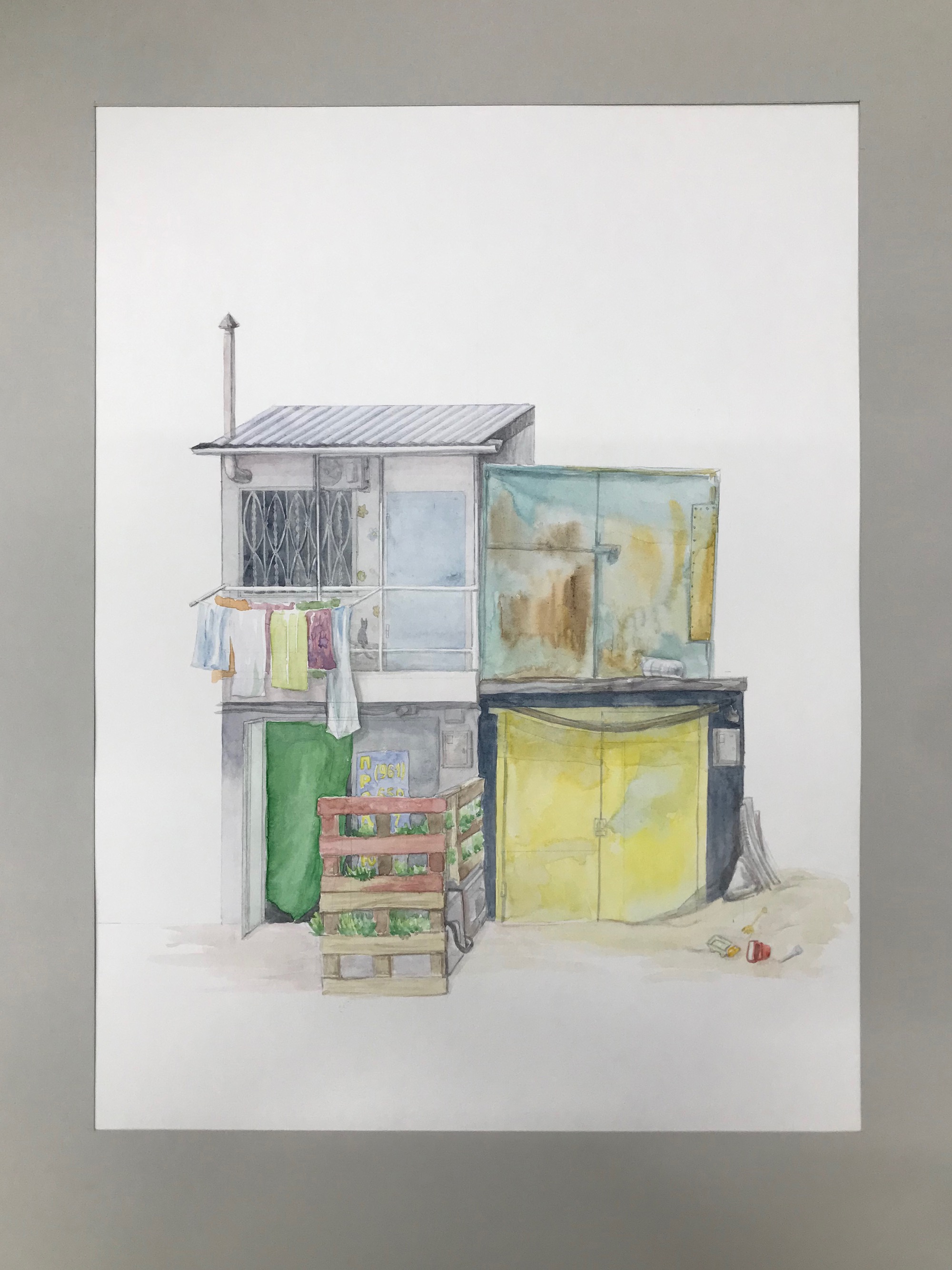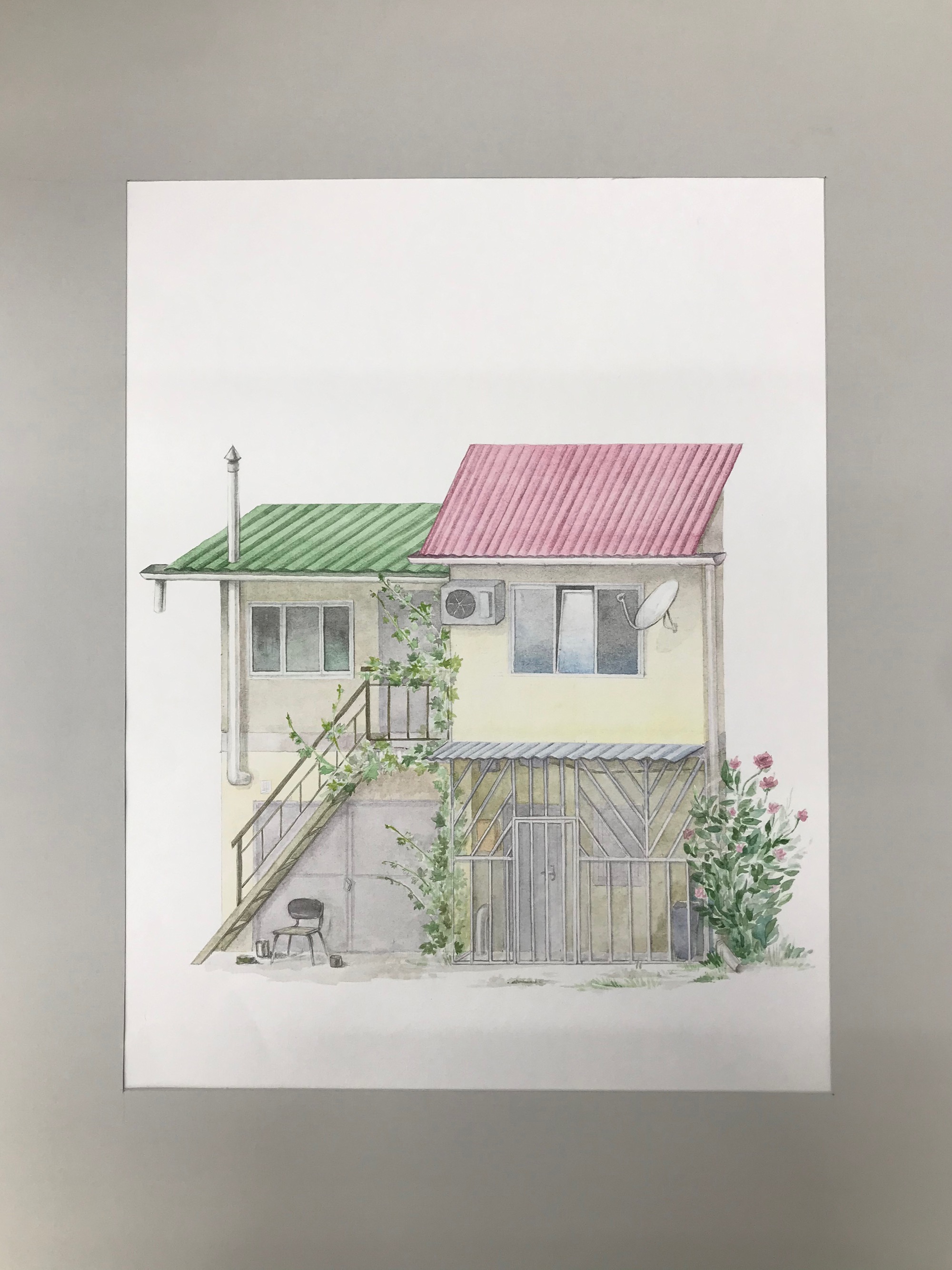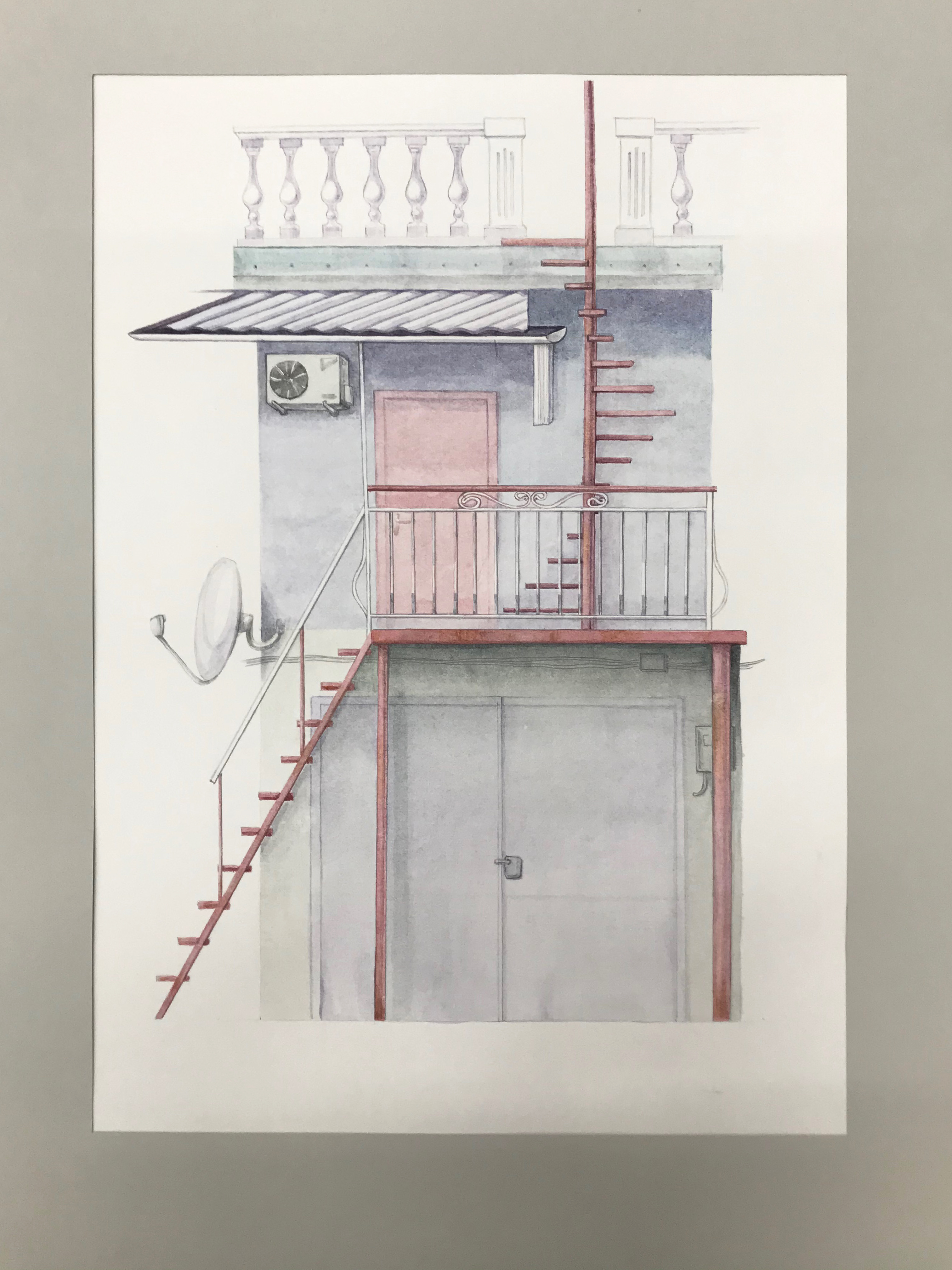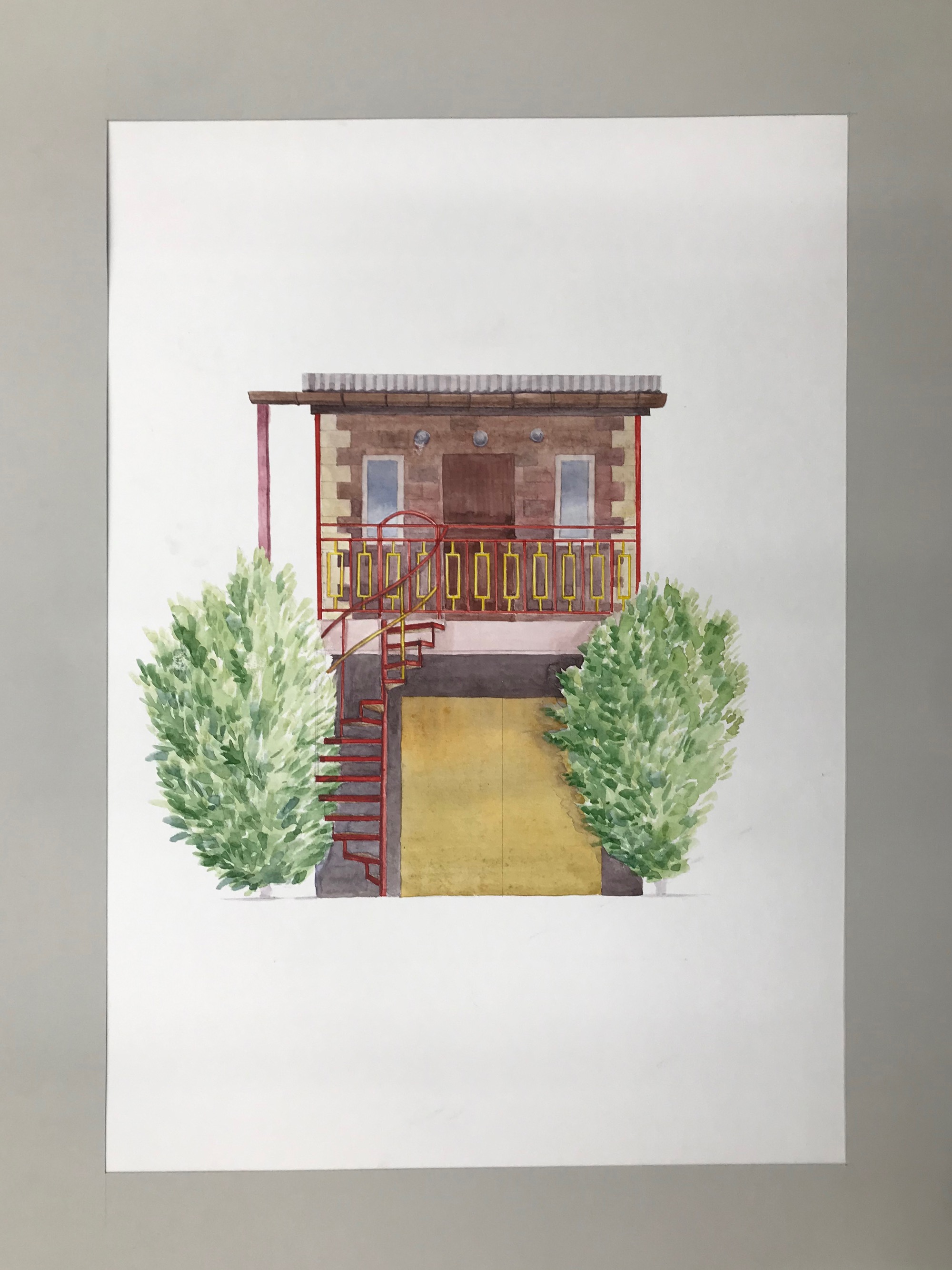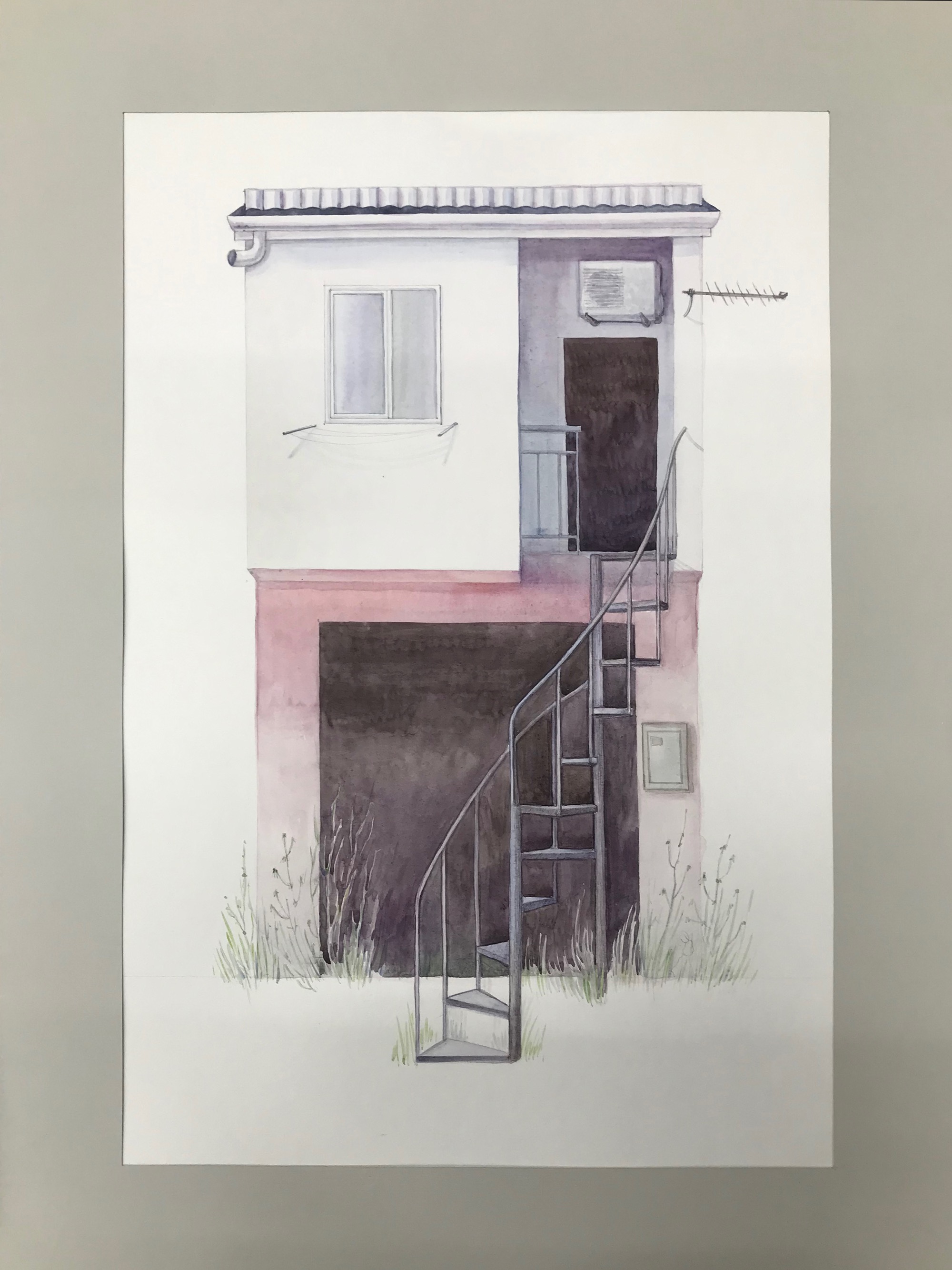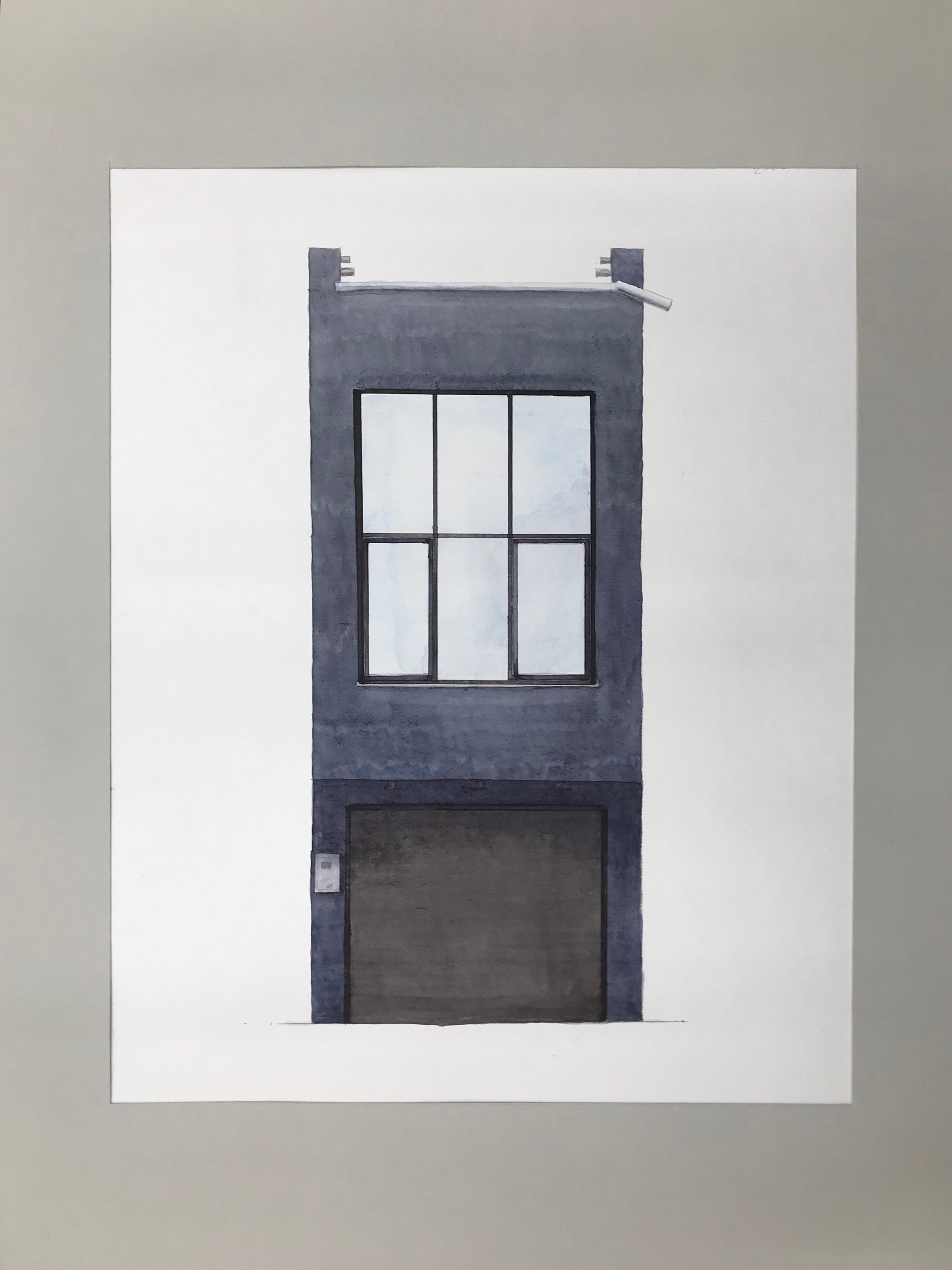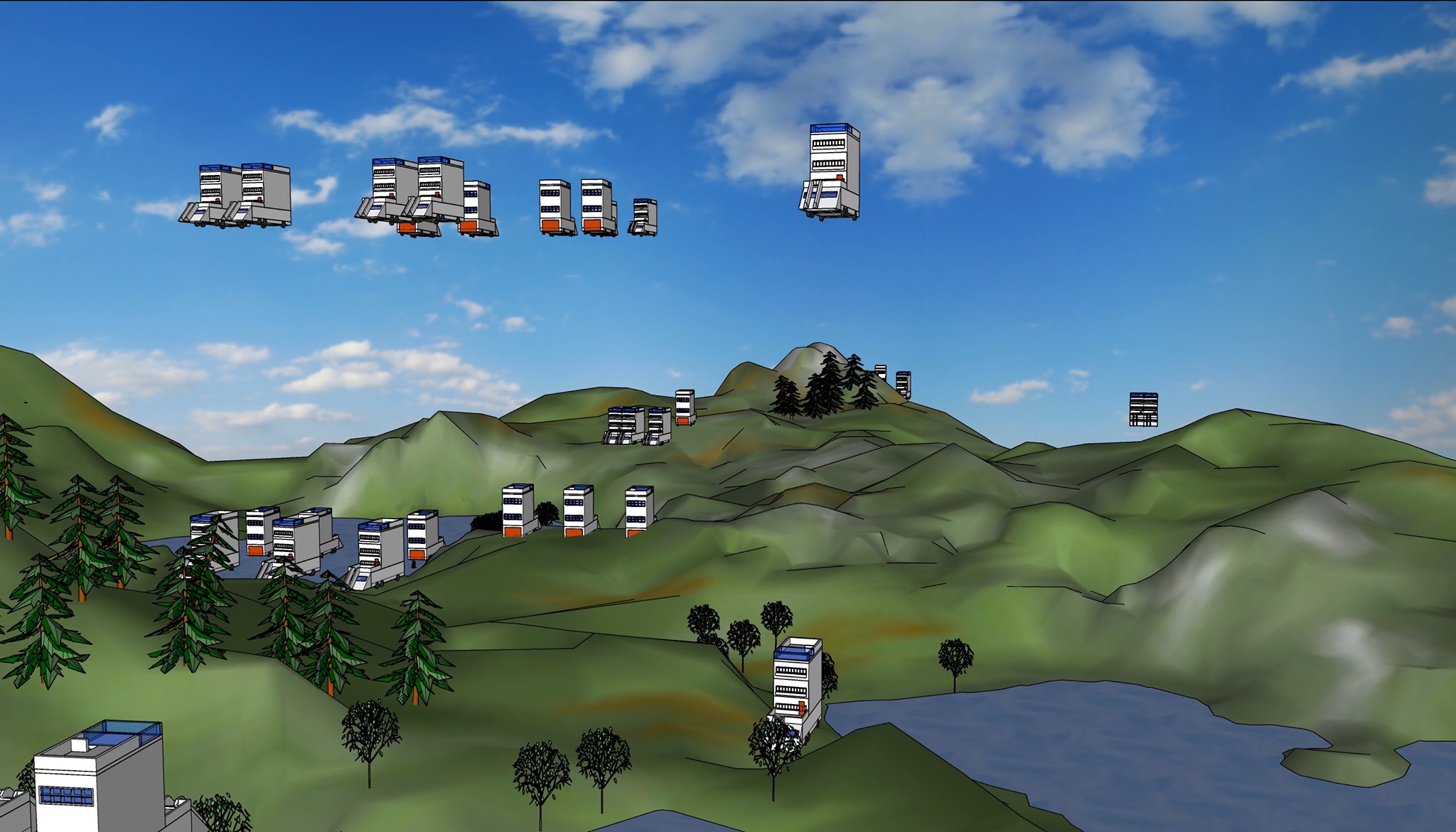The cities of the future, rather than being made out of glass and steel as envisioned by earlier generations of urbanists, are instead largely constructed out of crude brick, straw, recycled plastic, cement blocks, and scrap wood
Mike Davis. Planet of Slums (Verso, 2017)
Typography Center for Contemporary Art presents first solo exhibition of Elena Kolesnikova Voskhod Cooperative.
Voskhod Cooperative is devoted to specific areas of post-Soviet cities — living garage cooperatives. For over a year Elena Kolesnikova researched architecture and structure of these areas, which reflect social processes of all contemporary cities such as urbanisation, migration, unequal income distribution, unemployment, etc. Central object of the exhibition is an installation of a two-storied garage building accompanied with videos of garage cooperatives’ street views, interviews with inhabitants, architecture graphics, and panorama.
Curator Elena Ishchenko.
The exhibition also includes a film City-Garage (2020) by Hochesh (Want) art group (Varvara Gevorgizova, Ivan Shatravin-Dostov, Alexander Krifaridi). The film is commisioned speccially for the exhibition.
Installation: Pavel Kolesnikov, Vyacheslav Kaygorodov (inhbitant of garage cooperativ), Gleb Rostovtsev, Stepan Subbotuin, Eugeniy Rimkevich.
Design: Ruport Creative Agency.
English Translation: Misha Kurilov
Exhibition works every day in Typography CCA at 5c33 Zipovskaya St Krasnodar
June 22 – September 16, 12:00–21:00
Admission fee 200 roubles.
Reduced admission fee (students) 100 roubles.
Free admission for seniors, people with disabilities and participants of our Loyalty program on Patreon.com.
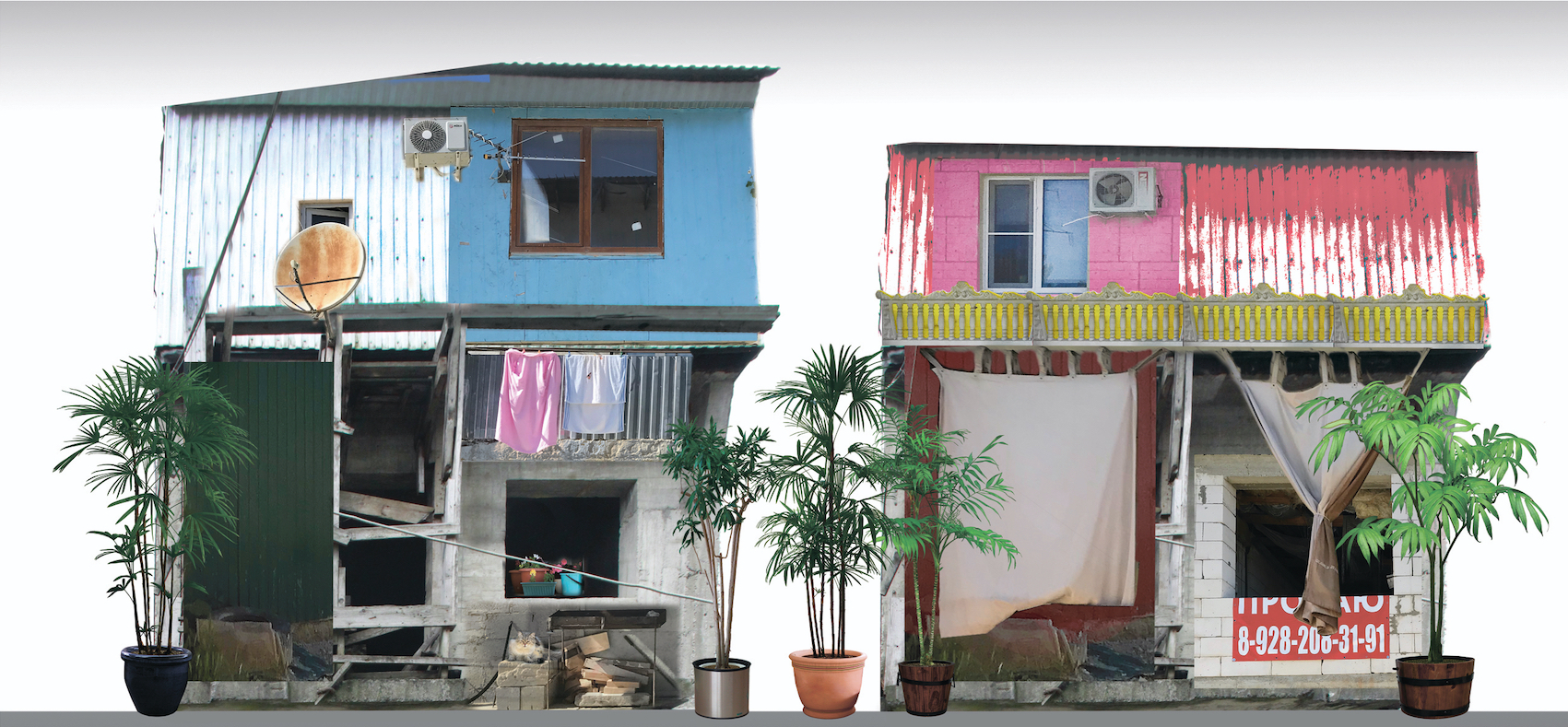
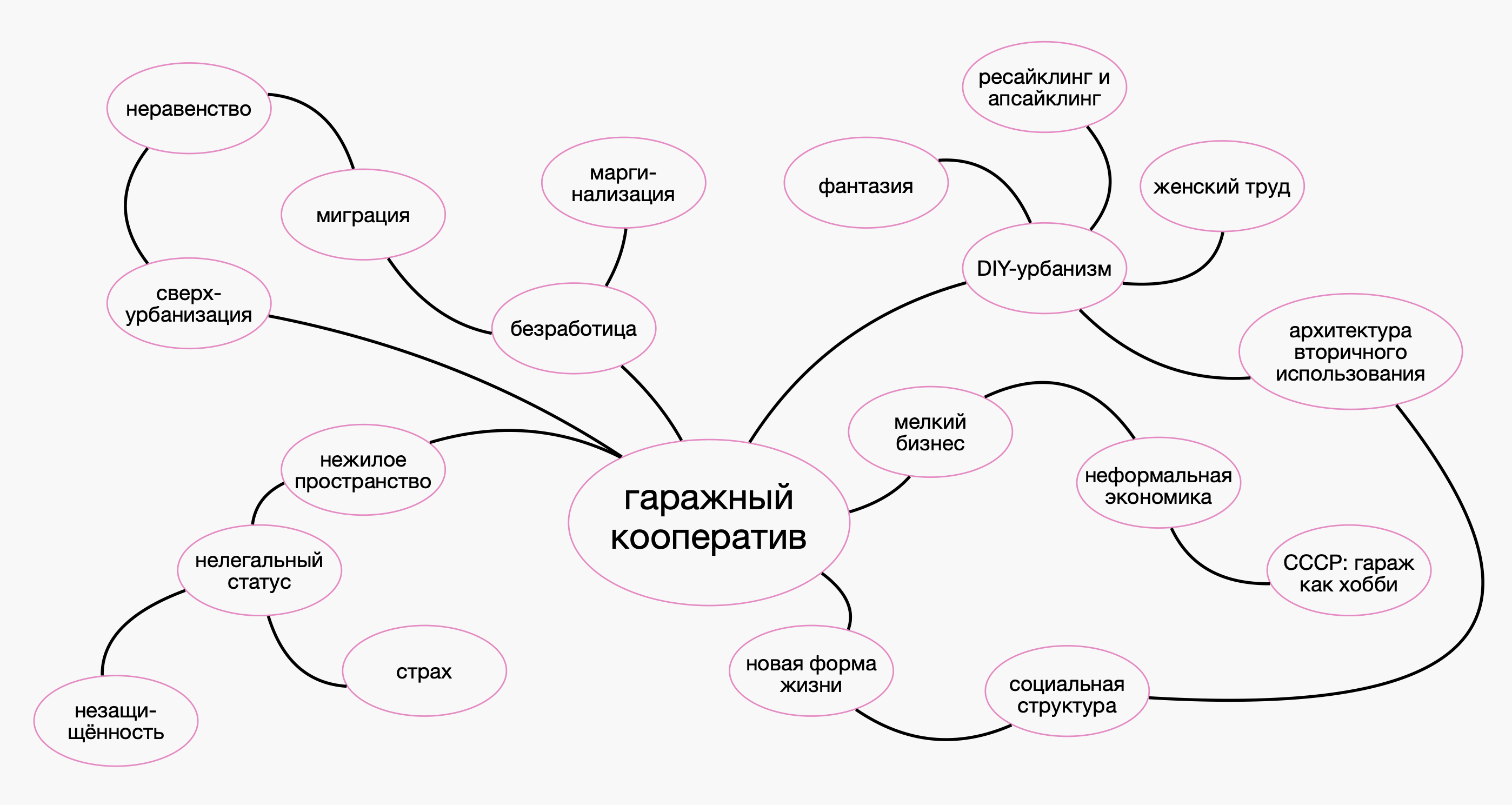
Any modern city is a territory of inequality. Migration flows, growing income differences, unemployment, and the interests of big businesses and developers are reflected in the urban landscape, forming areas that we are used to divide into poor and rich, central and suburbs, prosperous and not. At one end of these coordinates there are wide territories of country residences in picturesque places and central apartments, at the other — dense building, lack of comfortable environment and basic amenities.
Areas that are commonly referred to be disadvantaged, of course, not included in the master plans of urban development and strategies of urbanists — they arise without demand, as a byproduct of urbanization and the development of the capitalist economy. The population of cities is growing and with it the percentage of those people whose income tends to the subsistence minimum (at the moment in the Krasnodar region, it is about 10989 rubles) or even go beyond its line; those people who can not afford ‘normal’ housing in a ‘normal’ place to live. So there are favelas and ghettos, so there are residential garage cooperatives.
In a post-Soviet time the garage has built-in distributed way of life, they were a kind of third place where you go after work, not to sit in a cramped Khrushchyovka, and to do their work (typically, garages have been the men’s place, and not only because of the connection with carburetors and cars, but also because women’s business was linked with apartment and kitchen). Now garage cooperatives are experiencing a new level of development, which is written by sociologist Simon Kordonsky and urbanist Grigory Revzin, linking it, first of all, with the informal economy – self-made production and handicrafts, for which Kordonsky introduces the term «garage economy». Garage cooperatives are often a kind of creative clusters; often people not only produce products, but also live in garages: garage cooperatives turn into marginal areas specific to the post-Soviet space.
I remember when I first read about housing in garages: a guy from Tomsk, who moved to Moscow, bought a garage and within a year converted it into an apartment, where he lived for a couple of years – until he took out a mortgage and bought a small flat. This story was set in 2008-2010, and now I’m reading news about a big garage village in the Central district of Sochi – the result of a giant Olympic construction project that attracted many temporary workers from other cities and countries. The work ended, and the workers remained, forced to look for opportunities to survive in an extremely expensive resort city.
Legally, you cannot live in garage – they may be private property, but it’s not a residential premise, and this excludes residents from the legal space. As a rule, there are no central communications, except for electricity (and you have to pay twice as much for it – at the rates of non-residential spaces): instead of sewerage – individual septic tanks and instead of water supply – wells. Residents of garage cooperatives can’t demand better conditions because they don’t have the right to do it. Yes, the garage can be registered as private property, but this will not make it a legal place to live and will not protect it from possible police raids.
Surprisingly, insecurity and poverty stimulate fantasy about your own living environment. The garage is an open form. It can be built up by adding a couple of floors and a verandah with a great view, behind the garage you can set up a small garden. Fantasy can unfold, projecting its own beautiful little world. Someone makes carved verandas, someone designs a big common terrace for the entire cooperative. As a rule, women are engaged in the improvement of both personal space and the creation of shared public spaces. They ensure that garage cooperatives flourish DIY-urbanism, landscape created by their own hands, not only initiating some projects, but also support what has already done by other residents. As a rule, landscaping, as, in general, and all buildings in garages are provided by the secondary use of materials, which, of course, fits into modern eco-friendly trends, but primarily speaks of poverty.
The whole spectrum of contradictions of life in garages – forced, but nevertheless joyful, unprotected and at the same time free, where fantasy develops in a complex struggle for a better existence – it’s all revealed in the new Elena Kolesnikova’s project Voskhod Cooperative (real or fictional – who knows). Based on external characteristics and architecture, Elena designates a new form of life with its unique social structure and way of life, from which whole districts of post-Soviet cities are born.
The method of working on the Voskhod Cooperative continues the research of various forms of life started in other projects of Elena Kolesnikova. In Narodnaya Volya (The Will of People) (which was made for the research exhibition Working group // Department of identity in Typography CCA, 2018) she studied the phenomenon of Krasnodar architecture, where the architect becomes the customer and the owner of private property. In the project Odnushka, implemented in the new Moscow district of Novo-Molokovo, she turned to the most common type of housing in Moscow (and many other cities) — a one-room apartment in a unified residential area, where there is nothing ‘own’.
In the Voskhod Cooperative, Elena again uses the format of architectural drawing that is familiar to her as an architect by training and rare for modern art. It allow you to look at specific images and their details, and most important — to legitimize the existence of garages — not as attractions, but as signs of our time.
The central object of the Voskhod Cooperative is actually a garage: made of foam blocks, scrap metal, remnants of drywall from the last exhibition, timber; with cheap wallpapers, homemade shelves and household items found on advertisements website. This giant installation, perhaps the largest in the history of Typography CCA, collects details of residential garages to present them as they are — without criticism or ridicule, but with a sense of incredible vitality, imagination and struggle for the best in the worst conditions. The two-storied garage is complemented by videos, inside – interviews with residents, authors of their own garages, outside – the streets of one of the garage cooperatives – an entire city of 700 houses.
«The cities of the future, rather than being made out of glass and steel as envisioned by earlier generations of urbanists, are instead largely constructed out of crude brick, straw, recycled plastic, cement blocks, and scrap wood»,historian and urbanist Mike Davis writes in the book «Planet of Slums». Garage co-ops, like other marginal areas around the world, are embedded in the fabric of modern cities – cities of unfulfilled dreams, always developing according to plan, where life forms that someone would like to displace and would prefer not to talk about always break through and manifest themselves.
P.S. Following the logic of garage construction, after the exhibition, all the materials used in the installation will be applied again: Elena will build a workshop and an art residence in the courtyard of her house.
Text: Elena Ishchenko
Translation: Misha Kurilov
Photo: Yulia Shafarostova; Elena Sineok for Yuga.ru
Hochesh art group: Varavara Gevorgizova, Ivan Shatravin-Dostov, Alexander Krifaridi
City-Garage
Film, 2020
A film about outstanding architect Marina Krifarida who lives and works in Tuapse. She became famous as a creator of various buildings made from typical garages. Exploring influence and relations of her architectural projects with avant-garde ideas, filmmakers discuss a new Utopia — a city-garage.
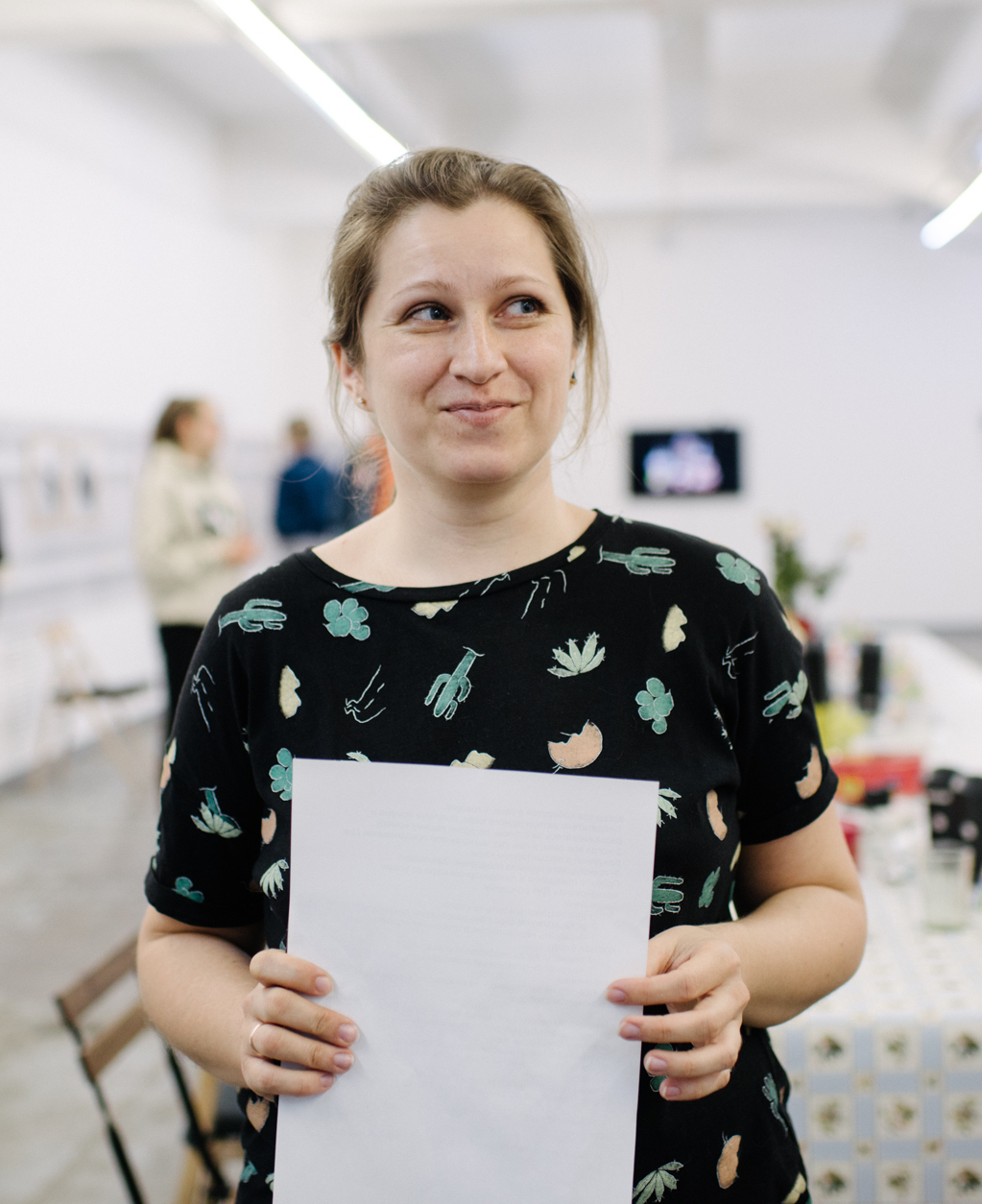
Elena Kolesnikova
Artist, architect. Elena was born in Irkutsk in 1984. She graduated from Moscow Architectural Institute (MARKHI) and self-proclaimed Krasnodar Institute for Contemporary Art (KICA). Elena participated in number of group exhibitions in Krasnodar, Novorossiysk and Moscow. In 2019 within the project «Beyond the Center» initiated by Austrian Cultural Forum in Moscow she presented a social sculpture Odnushka. She is a participant of League of Tenders project. As an artist she researches living areas and spaces and architecture as an environment, creating conceptual objects, social sculptures, installations, and performances.
She lives and works in Gelendzhik, Krasnodar Krai.





















